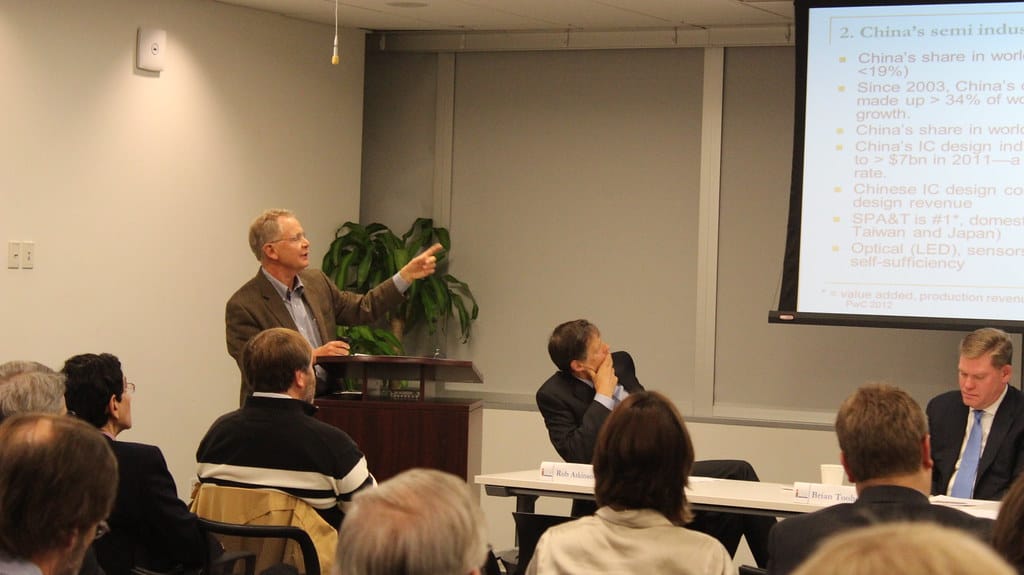The Unintended Architect: How Intel's Former CEO Accidentally Launched China's Semiconductor Revolution
In the high-stakes world of global semiconductors, few stories are as ironically compelling as how Craig Barrett, Intel's former CEO, inadvertently became one of the founding fathers of China's chip industry—a sector now viewed as America's greatest technological rival.
The Meeting That Changed Everything
In the early 2000s, Barrett made what seemed like a routine business decision: establishing Intel's first major manufacturing presence in China. But this move, driven by cost considerations and market access, would trigger a cascade of unintended consequences that transformed China from a technology importer into a semiconductor powerhouse threatening Silicon Valley's dominance.
Barrett's strategy was straightforward—leverage China's lower manufacturing costs while gaining access to its massive consumer market. Intel opened its first Chinese fabrication facility in 2010, followed by significant expansions and a $2.5 billion investment in Dalian. At the time, it appeared to be a win-win: Intel reduced costs while China gained jobs and technology exposure.
The Great Technology Transfer
What Barrett and Intel likely didn't anticipate was the extent to which this partnership would accelerate China's semiconductor ambitions. Through joint ventures, supplier relationships, and employee exchanges, critical manufacturing knowledge began flowing eastward.
Knowledge Migration
Hundreds of Intel engineers and technicians worked alongside Chinese counterparts, sharing expertise in chip design, manufacturing processes, and supply chain management. Many of these Chinese professionals later founded their own companies or joined domestic competitors, taking their Intel-acquired knowledge with them.
The ripple effects were immediate. Companies like Semiconductor Manufacturing International Corporation (SMIC) and Tsinghua Unigroup began attracting former Intel employees, rapidly closing the technology gap that had previously protected American semiconductor leadership.
The Supplier Ecosystem Effect
Perhaps more significantly, Intel's presence legitimized China as a serious player in the global semiconductor supply chain. The company's decision to source materials and components from Chinese suppliers provided these firms with the scale and credibility needed to serve other international clients, effectively bootstrapping an entire ecosystem.
From Student to Rival
The transformation has been remarkable. In 2000, China imported nearly 100% of its advanced semiconductors. Today, Chinese companies like HiSilicon (Huawei's chip division), Unisoc, and emerging players are designing chips that compete directly with Intel's products in smartphones, servers, and emerging technologies like artificial intelligence.
China's semiconductor market, valued at just $13 billion in 2000, reached $192 billion in 2022, with domestic production accounting for an increasingly larger share. The country now produces approximately 7.4% of the world's semiconductors by value, up from virtually zero two decades ago.
The Strategic Miscalculation
Barrett's decision reflected the prevailing Silicon Valley wisdom of the early 2000s: that manufacturing was a commodity business while the real value lay in design and innovation. This assumption proved costly as China demonstrated that controlling manufacturing often leads to mastering design.
The Chinese government's "Made in China 2025" plan explicitly targets semiconductor self-sufficiency, backed by over $100 billion in state investment. This isn't just about cost advantages—it's about technological sovereignty, with China viewing semiconductor independence as essential to national security.
Today's Consequences
The irony is palpable. Intel, once the undisputed leader in semiconductor manufacturing, now finds itself struggling to compete with Taiwan Semiconductor Manufacturing Company (TSMC) and Samsung, while Chinese firms challenge its market share in multiple segments.
Current Intel CEO Pat Gelsinger has acknowledged this challenge, launching a $20 billion investment in Arizona fabs and lobbying for the CHIPS Act—partly to counter the very competitive threat that Barrett's earlier decisions helped create.
Lessons for the Future
Barrett's story offers crucial insights for today's tech leaders navigating US-China relations. The semiconductor industry's complexity means that seemingly tactical business decisions can have profound strategic implications decades later.
As companies like Apple, Google, and Microsoft face similar choices about Chinese partnerships, Barrett's experience serves as a cautionary tale: in geopolitics, today's business partner can become tomorrow's competitor. The challenge lies in balancing immediate commercial opportunities against long-term strategic risks—a calculation that Barrett's Intel may have gotten wrong, inadvertently teaching China how to challenge America's technological dominance.
